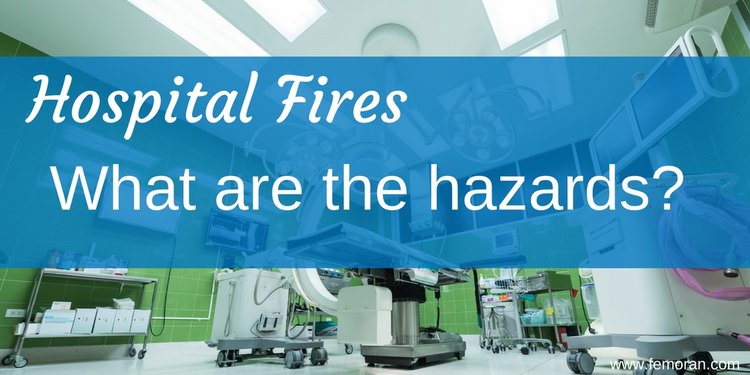
In 1929, a Cleveland clinic fire killed 120 people when they ignored NFPA recommendations for storing their x-ray film (made of nitrocellulose). Several tons were stored in the basement, a few feet away from a heat source. When nitrocellulose reaches 300 degrees, it turns into an explosive gas. The heat source caught the film on fire and toxic, explosive gas spread through the floorboards, causing explosions throughout the hospital.
Since 1929, fire and building code has changed a lot in hospitals. In 1980-1984, data shows that an average of 7,100 hospital fire happened annually with 5 deaths per year. In the study for 2006-2010, fires in hospitals went down to 1,400 with an average of 1 death per year.
The main reason fires reduced in hospitals so much during this time was smoking being banned from hospitals. When that ban took effect, fires caused by smoking materials in hospitals went from 35% to 7%.
Currently, the top causes of fires in hospitals are
Electrical Equipment
Hospitals have a lot of electrical equipment, and often have overworked sockets and cables. They sometimes use extension cords and daisy chain them together, which is a violation.
Kitchen Facilities
Fires in kitchen facilities are common because of cooking fats, electrical ovens, toasters and open flames.
Cigarette Smoke
While cigarettes are banned in healthcare facilities now, people still sneak them or, while smoking outdoors, don’t properly dispose of them.
Specialized Medical Equipment
Lasers and electrosurgical tools are an ignition hazard, especially near oxygen tanks, surgical clothing, and flammable sterilizing liquids.
A study done on fire code violations in hospitals showed that the top fire safety violations were
Extension Cord Daisy Chains
Because of the need to have equipment plugged in, hospitals will use extension cords and daisy chain them together, which is a violation and can cause them to become overheated, sparking a fire.
Fire Door Compliance
The Fire Marshal who collected data of the most violations in hospitals said that many fire doors were not closing or latching correctly. They also had holes in them, which would cause them to no longer be fire proof.
Fire Exit Obstructions
Carts, wheel chairs, and medical equipment were found blocking fire exit doors.
Hand Sanitizers
Alcohol based hand rubs are all over hospitals. However, they are flammable and need to have a 6-foot breadth between the sanitation station and any ignition sources.
Gas Cylinders and Medical Oxygen Compliance
Gas cylinders and medical oxygen need to be properly stored and secured.
Portable Fire Extinguishers
Portable fire extinguishers were missing, obstructed, improperly mounted, previously discharged, past due inspection, improperly signed, or not enough were in the hospital.
From 2009-2013, only 4% of fires went beyond the point of origin thanks to the increase in fire sprinklers. Today, 79% of hospitals are protected by fire sprinklers and it has greatly reduced the spread of fires and fire-related death in hospitals.
 September 18, 2017
September 18, 2017